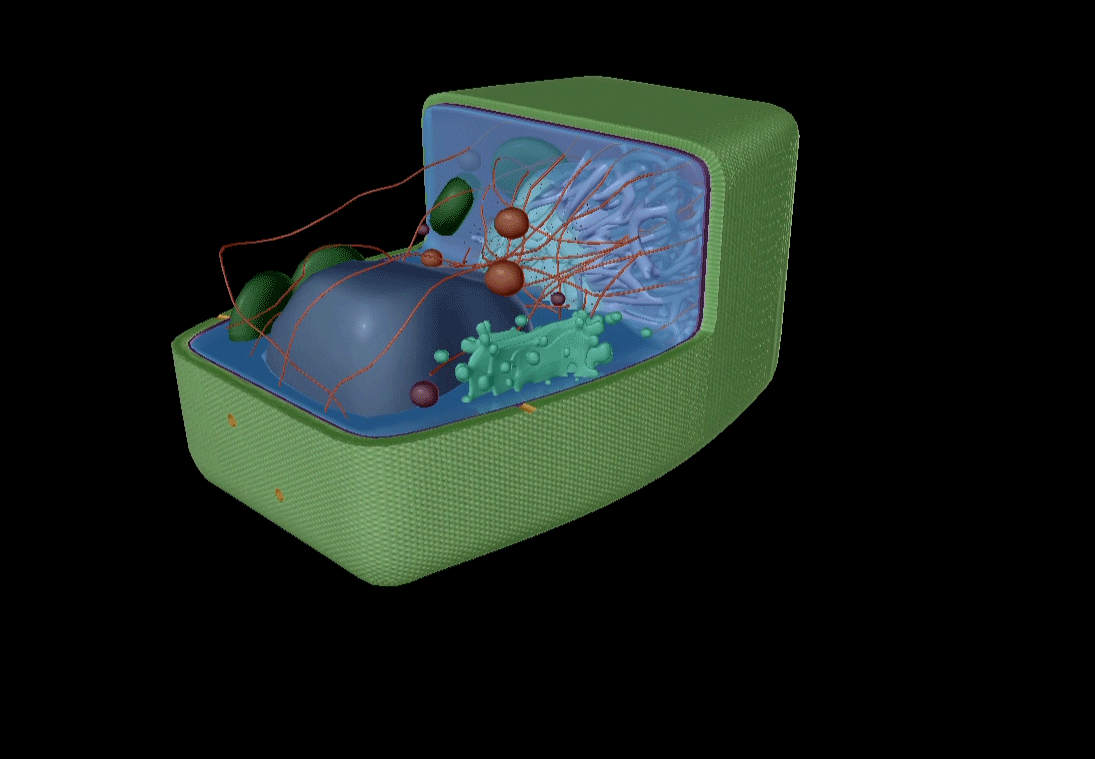How 3D Models Help Biology Students
Posted on 2/4/22 by Sarah Boudreau
As technology advances, there are more and more tools to help students visualize complex information. These tools open up new avenues for students and teachers to explore content in a visual medium, creating more dynamic classroom experiences.
Many times here at the Visible Body blog we’ve covered how 3D models can help anatomy and physiology students learn and can supplement—or stand in for—labs, but today, we’re going to discuss how 3D visualizations help in the biology classroom.
When using manipulatable 3D models, students interact with the information in a sensory way; this increases their motivation and interest in the subject, and can help increase their retention of course content.
How does visualization help?
Models can help all students, regardless of level, understand scientific concepts. The use of models is well-documented and popular in education across subjects—think about the solar system models in K-12 classrooms with the styrofoam balls painted to represent the planets! Textbooks tend to prioritize facts over process, and models can help bridge that gap so students can have a fuller understanding of the phenomena they study.
How does visualization help in learning biology? As an article published by the American Society for Cell Biology points out, much of what we know about cell and molecular structure comes from imaging techniques, making biology inherently visual.
In a 2016 article that uses the National Research Council’s Next Generation Science Standards as a framework, the authors point out that models provide a jumping-off point for inquiry and hold not only illustrative, but explanatory power.
 GIF of Visible Biology's plant cell model.
GIF of Visible Biology's plant cell model.
There are two major theories that explain their efficacy in science education: the dual-coding theory and the visual imagery hypothesis.
In dual-coding theory, linguistic and visual information are processed through different mental systems. Visualization combines linguistic and visual information, which means that students engaging with a model process the course content in multiple systems. Engaging these multiple systems makes for a more thorough understanding of the material.
According to the visual imagery hypothesis, visualizations help with problem solving. Visualizations identify and reinforce key concepts and takeaways, and they ask students to identify relationships between concepts. In a model, information is manipulatable and can therefore be used to draw comparisons between concepts.
Why 3D?
Illustrations and physical models have their limitations. For example, 2D illustrations sometimes leave out a lot of key details, particularly at the cellular and molecular level.
According to an article in the Journal of Molecular Biology, “While illustrated texts are helpful in distilling complex concepts, they are criticized for including oversimplified visualizations that fail to integrate learning in a meaningful way (emphasizing facts over scientific process, favoring abstraction over sufficient explanation).”
On the other hand, 3D content where the user can zoom in and out and manipulate the model offers a more intricate way of understanding these concepts. Moreover, animation can capture the motion and dynamic nature of molecules and cells better than a static image.
 GIF from Visible Biology.
GIF from Visible Biology.
3D models require a degree of spatial cognitive processing. This 2019 article points out that health and natural science careers require visuospatial abilities, which means that learning in modalities that require visuospatial processing allows students to learn course content as they develop their visuospatial skills. The authors discuss how science communication is usually done in a visuospatial manner, so developing these skills makes students more prepared to both receive and give these explanations. Research has indicated that learning methods that connect to spatial training can result in higher testing scores.
These visualizations can help students retain information for longer, as manipulating 3D models uses sensory memory.
Furthermore, augmented reality (AR) can engage in multiple modalities as they interact with models alongside the real world. If you want to learn more about AR in the classroom, check out our blog post on the topic!
What can 3D models and interactive learning do for your biology classroom?
There is not yet extensive research on how 3D models can help biology students, but the existing literature indicates that these visualizations can increase your students’ motivation to learn biology and help them retain information.
A small 2019 study looked at 20 ninth-grade biology students who used 3D models in AR compared to 20 of their peers who did not. The authors noticed a significant difference in the motivations in the experimental and control groups, noting that, “The AR activities had a large effect on the extrinsic motivation and self-efficacy perceptions of the learners.”
Those findings were supported by a study published in 2021, albeit with first-year college students rather than high schoolers. In this study, first-year cell biology students used 3D visuals in virtual reality to learn about osmosis and diffusion. The authors examine two years’ worth of data as 800 students participated in the study.
After participating in these visualizations, students were tested on their knowledge and completed an exit survey about their experience in 3D. 97% of students agreed or strongly agreed that the 3D experience helped them visualize osmosis, and 95% agreed or strongly agreed that it promoted their understanding of osmosis. In the qualitative portion of the assessment, the majority of students reported that the experience was fun and/or interesting, and 30% of respondents said that they wanted the course to involve more 3D visualization.
3D models can help students understand and retain core information. A 2017 study of undergraduate biology students challenged them to understand more complex concepts in molecular biology: protein conformational change, molecular crowding, and random molecular motion in association with a membrane-receptor binding event. 131 first-year students who had completed an introductory biology course were selected for the study. Four groups watched different 3D animations that ranged in complexity, and they were tested twice on their knowledge. Students who watched complex animations scored significantly higher than those who watched simpler ones when tested two weeks later on core concepts.
Need some inspiration?
If you would like some ideas for incorporating 3D models into your classroom, check out these free lesson plans on diffusion and photosynthesis!
Be sure to subscribe to the Visible Body Blog for more anatomy awesomeness!
Are you an instructor? We have award-winning 3D products and resources for your anatomy and physiology course! Learn more here.



